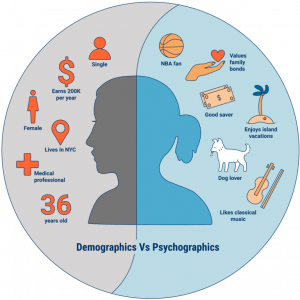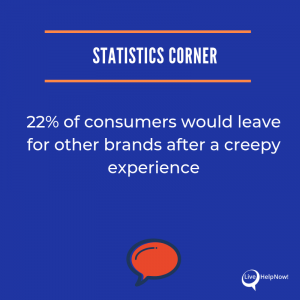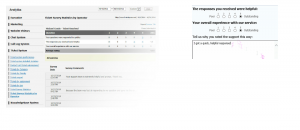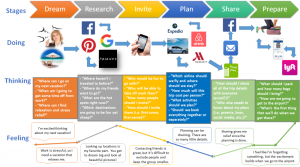If you ever talked about the nuances of a World War II battle to a friend who doesn’t care about history, talked about baseball to someone who doesn’t watch sports, or tried to discuss a piece of artwork with someone uninterested, you know this truth well.
One has to know his audience.
It’s important in making small talk. It’s essential in marketing and customer acquisition.
In order to successfully acquire, keep, and satisfy clients a company must have a clear idea of who the clients are.
That is where the process of customer profiling comes in.
Customer profiling is like sketching the portrait of your customers who are typical users of your services or products.
To read more: https://t.co/VZsnEzjaNh#Marketers #accountbasedmarketing #surethinks #marketingtips #marketingtool #customerprofiling #marketingstrategies pic.twitter.com/WjfwjHNUkO— Surethinks (@surethinks) July 8, 2019
What is customer profiling?
Customer profiling is a process during which a company creates a depiction of its customers. The profiles then grouped together based on similar characteristics. The company then uses these profile groups to make key decisions in terms of its products, services, designs etc.
While a clear picture of existing customers is a must, a company also needs to know who its ideal customer is as well.
Understanding what your existing customer types are and why they are buying from you allows you to see their individual needs.
Knowing your ideal customer types gives you an opportunity to target specific groups that might not be in your customer base right now.
Your customer data is not simply a guide for constructing marketing messages. Most companies find that incorporating this vital information into their decision-making provides outsize returns. They can now craft products or introduce services which they know will serve a need.
Not knowing to whom your products and services must appeal is like crossing the street with your eyes closed.

How Customer Profiling Works
Customer profiling proceeds differently for each client and industry.
Here are five steps to successful customer profiling that will help you come up with a portrait of your client base and help you shape services and products based on those clients’ needs.
Related Post: Six Steps to Successful Customer Journey Mapping
Steps to Customer Profiling
1. Identify the goal of your product or service.
What is the problem your company’s faces that you want to solve? Do you want to attract more visitors to your site? Increase conversions on your landing page? Get more people to sign up for your free trial? Provide better customer service to your existing clients?
Keeping the goal of the final solution in mind, your customer profiling process will be more focused and efficient.
2. Create the Ideal Customer Profile (ICP)
Creating the ICP provides a clear picture of what you are seeking in a client. By setting forth your ideal client expectation you are setting in motion a process of getting these clients on board.
There are several templates and guides available to accomplish this step.
Also, sking the right questions is important, so make sure you set out with a list that supports the goals you set for yourself in Step 1.
The questions involved will vary, though ultimately the goals are usually the same: collect their demographic interviews, and then determine from their perspective how well your business is serving their needs and where there are untapped opportunities.
3. Collect Information on Existing Customers
This is a crucial step in customer profiling because you can’t really decide where you’re going without seeing where you’ve been. Perhaps you’re already hitting your ideal market and just need a niche focus. Perhaps you want to expand on the existing base. Again, always keep your initial goal in mind.
In this step, it’s easy to get a bit creepy and overstep the boundaries of privacy.
Banks around the world have now begun using mobile data in order to improve customer profiling and get access to a credit score. Some feel this borders on invasion of privacy, let us know what you think in the comments below!#POSLABS #banks #mobiledata https://t.co/nlTdQpyFnE
— POSLabs (@myPoslabs) July 15, 2019
The key to staying within the boundaries of appropriateness is to use information that your clients shared directly with you or as part of your onboarding process.

Using ticketing management software can give you a lot of information on each client and his history with your brand.
Other tools like surveys and email questionnaires are also great ways to get direct feedback from your clients.
Social listening is a useful technique used by many marketing to learn about current trends and clients’ needs.

Related Post: A Tool That Makes a Difference: Ticket Management Systems
4. Implement customer Profile into CX Journey Map/Create Journey Map
Now that you have all the information about the customers – potential, ideal, and current – you may use to enhance another great tool you should be using – customer journey map.
The map, which is a visual representation of everything your clients are doing, seeing, and feeling as they interact with your brand.

5. Use the Map and the Profile to Target Marketing
From here, it’s up to the business.
These customer profile data let firms find what differentiates them from the competition in the eyes of the customers, and dozens of other useful points.
Equipped with profiles a company can figure out an appropriate communications strategy which will deliver the best possible marketing message to the right type of consumer, at the best possible time.
Similarly, companies often find new opportunities for selling their products, creating new ones, or increasing sales in existing channels.
Here is an example. Having identified customer types, the business can now ask — what kind of TV shows and magazines will the customers read? What kind of marketing material would appeal to the most? What other brands do they consume?
Based on the answers to all of these questions, often new – and much more powerful – advertising strategies become obvious, and opportunities for joint venture deals reveal themselves.
Why is customer profiling important?
Customer profiling is important because it helps businesses understand their customers’ needs, preferences, and behaviors. By building detailed profiles, companies can tailor their marketing, products, and services to match customer expectations, which increases satisfaction and loyalty. Profiling also enables businesses to segment their audience effectively, targeting specific groups with relevant offers and messaging. This targeted approach improves conversion rates, reduces marketing costs, and enhances customer engagement.
Additionally, customer profiling helps predict future behaviors, allowing companies to anticipate needs and personalize experiences. It creates a foundation for stronger customer relationships and helps businesses stay competitive by addressing their customers more strategically. For instance, businesses selling natural products can analyze customer preferences to recommend the right scents. If you’re looking for personalized recommendations, check the collection of essential oil to find the perfect match.
Customer Profiling Benefits
- Enhanced Personalization
Profiling allows businesses to tailor products, services, and communications to individual preferences, improving customer experience. - Increased Customer Loyalty
By meeting specific needs, profiling helps build trust and loyalty, making customers more likely to return. - Better Targeting
Profiling helps segment audiences, allowing for more precise marketing that reaches the right customers with the right message. - Higher Conversion Rates
Targeted campaigns lead to higher engagement and conversions by focusing on customers most likely to buy. - Efficient Marketing Spend
Businesses save money by targeting only relevant audiences, reducing waste in marketing budgets. - Improved Customer Retention
Profiling helps identify and address customer pain points, leading to higher satisfaction and retention rates. - Insightful Future Planning
Profiling provides valuable data on customer trends, helping businesses plan better products and services. - Competitive Advantage
Understanding customer needs and behaviors gives companies an edge over competitors by aligning offerings closely with demand. - Product Development Guidance
Profiling insights can guide product improvements or new product ideas that resonate with target customers. - Predictive Capabilities
Profiling helps forecast customer behavior, enabling proactive measures to enhance customer experience and meet evolving needs.
These benefits create a more customer-centric business, driving growth, satisfaction, and long-term success.
Conclusion
Customer profiling creates a picture of a company’s clientele. This picture, especially when used together with other techniques such as customer journey mapping, can allow a company to direct its marketing and development efforts in new and efficient ways.
How does customer profiling help your company succeed?




